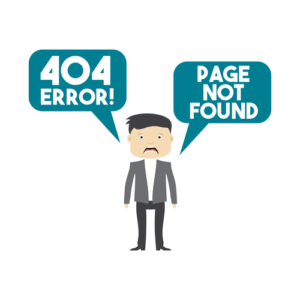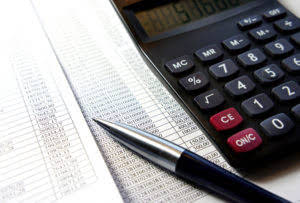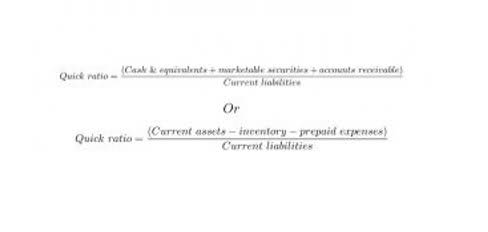
The cash over and short account is an excellent tool for tracking down fraud situations, especially when tracked at the sub-account level for specific cash registers, petty cash boxes, and so forth. An examination of the account at this level of detail may show an ongoing pattern of low-level cash theft, which management can act upon. For example, fraud situations may be traced back to the people directly responsible for a cash register or petty cash box. For example, assuming that we have a cash overage of $10 instead in example 1 above, as a result of having actual cash on hand of $2,800 which is more than the cash receipts of $2,790. You may experience cash discrepancies on your income statement because an employee gave a discount without documenting it.

How to Reconcile Petty Cash

You will show an expected payment amount for a product but will have taken in less than that. Make sure all discounts are authorized by management and documented by the employee issuing the discount, so you can balance your Cash Short and Over account. The cash over and short is recorded on debit when there is a shortage. In contrast, the cash over and short is recorded on credit when there is overage. The primary use of the cash over and short account is in cash-intensive retail or banking environments, as well as for the handling of petty cash.

How to Figure Shorts & Over Entries in Accounting
The cash shortage may happen often with the retail business as it deals a lot with small notes when making the sales and the cash sales are usually need to be reconciled daily. Meanwhile, other types of businesses usually only have a cash shortage when dealing with the petty cash when it is needed to be replenished (usually once a month). A cash short journal entry records any discrepancies between the amount of cash expected in your business’s accounts and the amount actually present. A miscellaneous expense account used to record the difference between the amount of cash needed to replenish a petty cash fund and the amount of petty cash receipts at the time the petty cash fund is replenished. On the other hand, if the company has a cash shortage in the petty cash fund, it can make the journal entry with the debit of cash over and short account instead. However, the company still needs to account for the cash overage or shortage with a proper journal entry in order to match the balance on the debit with the balance on the credit in the accounting system.

Bookkeeping
My Accounting Course is a world-class educational resource developed by experts to simplify accounting, finance, & investment analysis topics, so students and professionals can learn and propel their careers. Shaun Conrad is a Certified Public Accountant and CPA exam expert with a passion for teaching. After almost a decade of experience in public accounting, he created MyAccountingCourse.com to help people learn accounting & finance, pass the CPA exam, and start their career.
- Likewise, it can save us a bit of time and effort by including both cash shortage and cash overage into only one account.
- However, after counting the cash on hand, we find that the total cash remaining plus the total amount in petty cash expenses receipts does not equal the $100 of the established petty cash fund as there is a $3 short.
- In this journal entry, we credit the sales revenue because in the retail business the cash shortage usually happens due to us failing to keep the accurate records that are related to sales revenue.
- Therefore, the balance of cash short and over is on debit or credit depends on whether it is shortage or overage.
- Credit, or decrease, your cash account by the amount by which you must replenish the petty cash account in the journal entry.
Accounting Ratios
Credit, or decrease, your cash account by the amount by which you must replenish the petty cash account in the journal entry. In contrast, let’s assume that during the cash count, the actual cash from the cash sales is $495 instead of $510. In most cases, customers will most likely to dispute a shortage of change. Therefore, the cash over and short is usually at debit balance which represents an expense. This expense is treated as a miscellaneous expense and presented in the income statement as a general and administrative expense section. However, if the balance is at credit, it is treated as miscellaneous revenue instead.
- It may seem like a small item to track, but think of it from the point of view of a retail or restaurant chain where millions of dollars pass through the cash registers every day.
- For other types of businesses, the cash shortage usually happens when dealing with petty cash.
- In most cases, customers will most likely to dispute a shortage of change.
- A sample presentation of the Other Expenses line item in an income statement appears in the following exhibit.
- The total amount of cash sales in the sales receipts is $2,790, however, the actual cash we have is only $2,785 (excluding the $100 cash prepared for small notes changes at the beginning of the day).
In accounting, cash over and short journal entry is usually made when the company replenishes its petty cash fund. This is due to the cash remaining and the receipts in the petty cash box may not equal the amount of petty cash fund established. Let’s assume Tom rang up a $100 pair of running shoes for $100, but he miscounted the cash received for the shoes. The accounting system will show $100 in sales but $101 of collections. The one-dollar difference goes to the cash over and short account. The journal entry to record this sale would debit cash for CARES Act $101, credit sales for $100, and credit cash over short for one-dollar.
Income Statement
Now cash is debited for $99, cash over and short is debited for $1, and the sales account is credited for $100. You will experience cash overages if a customer what type of account is cash short and over was charged for an extra service or product and the employee did not report it. Your cash expectations are tied to sales, and if a customer actually paid more than a sales slip or invoice indicates, you will have more cash on hand than your documentation predicts. You can begin to understand the reasons for cash discrepancies on your income statement by examining cash handling in your business.
An Overview of the 6 Types of Investment Accounts
This is because they involve with cash sales that currency changes are required. Cash Over and Short account is also used for Petty Cash overages and shortages. Generally, the amounts in the account Cash Short and Over are so small that the account balance will be included with other insignificant amounts reported on the income statement as Other Expenses.
Chartered accountant Michael Brown is the founder and CEO of Double Entry Bookkeeping. He has worked as an accountant and consultant for more than 25 years and has built financial models for all types of industries. He has been the CFO or controller of both small and medium sized companies and has run small businesses of his own.